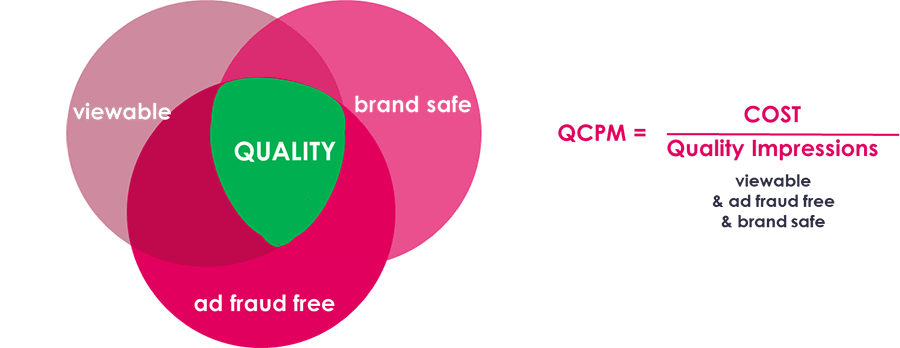An impression is an impression is an impression, but how do you know if it’s really worth the money? Oliver Gertz delves into the details of defining a quality CPM.
These days, a typical ad server reports 450 different metrics on every single placement in a campaign. Add in an ad verification tool and the number of metrics you can look at gets even bigger. Moat, for example, reports 60 real-time video attention metrics alone.
Worryingly, digital’s promise that everything can be measured has turned into metric overload, and many advertisers are now confused by the dozens of metrics they find in their campaign reports; Viewability Rate, vCPM, Fraud Rate, CPCV, the list goes on…
What’s more, most CMOs actually care very little about specific digital metrics. They are focused on growth, brand love and sales. Meeting their needs means being smarter about the digital metrics and matching them to desired business outcomes. Our task is to find the real-time digital KPIs that correlate best with business outcomes, the impactful impressions.
Central to this debate are the issues of Brand-Safety, Viewability and Ad Fraud. A viewable ad, that is delivered to a bot is worthless; an ad in a high-quality environment that is not viewable is worthless; and an ad that is viewable to a human in a context that may be damaging for the brand is not only worthless but can potentially have a significant negative value for the advertiser, too.
Introducing the Quality CPM
Our job is to maximise the impact of the media budget. Therefore, we only count impressions as valuable if they are brand-safe – based on each brand’s definition of brand safety – viewable – based on the IAB Standard or the higher GroupM Standard –and ad fraud-free.
A quality impression is one that meets all three requirements and can then be evaluated against cost – the Quality CPM.

This single KPI simplifies campaign evaluation, ensures that we compare apples to apples when benchmarking different media buys, and guides the right decisions in our media optimisation.
It can be used across all display buys, from traditional to programmatic, and publishers from YouTube to Facebook (although it will need tweaking for video because an opportunity to see is often not enough). Alternatives could be Cost per Completed Quality Video view (fraud free and brand safe), or – even harder – Cost per Video Audible and Viewable on Completion.
Making Viewabiliy your core KPI may waste more than 20% of your budget
This single KPI, which is focused on cost per outcome, also ensures that we don’t take the wrong decisions. That’s easily done because when you optimise Viewability rate on its own, for example, you can also waste a significant part of the budget by shifting to expensive placements with high viewability rate, ignoring those placements that may have a slightly lower Viewability rate offset by a lower CPM.
The loss can be as much as 20% of the budget.
Let’s take two examples based on a brand that sets a viewability target of 70%. The advertiser will now see two media placements and have to decide which one to buy:
- Placement A with a $7 CPM hits that 70% viewability target
- Placement B at $4 CPM only manages a 50% viewability rate.
Following corporate guidelines means playing $10 for each viewable CPM with placement A, but the viewable CPM for placement B costs just $8, representing a 20% saving.

Focus on Cost per Outcome drives transparency
In the modern media world, marketers are demanding transparency and simplification. But, sometimes, our fascination with technology is not helping on that demand, and the desire to have fancy dashboards reporting dozens of metrics is not helping brands make better decisions.
The solution is to identify clear KPIs that show the impact that digital activity is having on overall growth in profitability and brand love – providing a direct link between the real-time metrics that ad server and verification tools provide and those vital business outcomes.
Brand lift studies and sales impact studies, combined with marketing mix modelling, can give us the full picture of the value created by our campaigns, and we should be using these to identify the most relevant leading indicators that can be optimised in real time and lead to the business outcomes the brand wants to achieve.
For most brand advertising, the answer will be some form of quality CPM that can be optimised in real-time. It’s simple, transparent, easy to understand and effective. And even performance marketers should look at the quality impression, as non-viewable ads or fraud cannot drive the sales that many attribution solutions report.
–
This article first appeared in www.warc.com
Seeking to build and grow your brand using the force of consumer insight, strategic foresight, creative disruption and technology prowess? Talk to us at +9714 3867728 or mail: info@groupisd.com or visit www.groupisd.com

